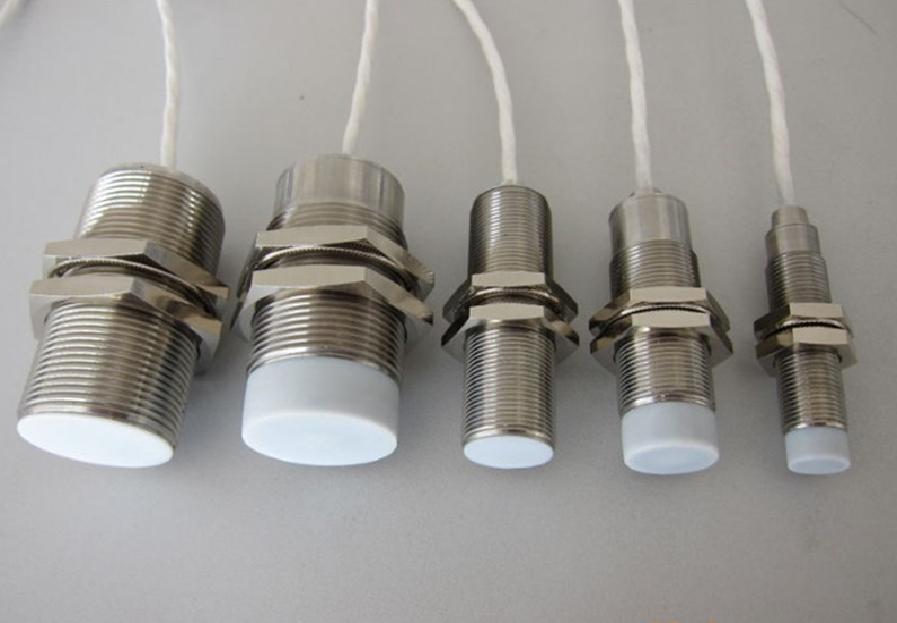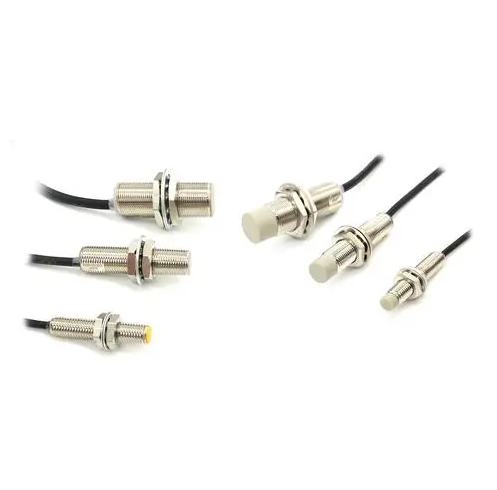By Panasonic 283
Proximity sensor is a general term for sensors that replace contact detection methods such as limit switches and are designed to detect without touching the detection object. The movement information and presence information of the detected object can be converted into electrical signals. Among the detection methods replaced by electrical signals, there are methods that use electromagnetic induction to generate eddy currents generated in the metal object of the detection object, methods that use the capacity change of electrical signals caused by the approach of the object to be detected, and methods that use lithium stones and guide switches.

Common troubleshooting for proximity sensors
①There are high-power devices around the proximity sensor, and there is electrical interference;
② There are other measured objects in the detection area around the sensor probe;
③ There is jitter in the object detection process, resulting in exceeding the detection area;
④ Multiple probes are installed closely to interfere with each other;
⑤ The response frequency is within the rated range;
⑥ The stable power supply supplies power to the proximity sensor separately.
Ⅰ. Types of Proximity Sensors
Photoelectric Proximity Sensor
In the photoelectric proximity sensor, the beam axis of the light-emitting diode (or semiconductor laser tube) and the axis of the phototransistor are on the same plane and form a certain angle, and the two axes intersect at one point in front of the sensor. When the surface of the detected object is close to the intersection point, the reflected light of the light-emitting diode is received by the phototransistor to generate an electrical signal. When the object is far away from the intersection point, the reflection area is not within the viewing angle of the phototransistor, and the detection circuit has no output. Under normal circumstances, the driving current sent to the light-emitting diode is not a direct current, but an alternating current of a certain frequency. In this way, the receiving circuit also obtains an alternating signal of the same frequency. If the received signal is filtered, only the same frequency signal is allowed to pass through, which can effectively prevent the interference of other stray lights and increase the luminous intensity of the LED.
Inductive Proximity Sensors
The inductive proximity sensor is composed of a high-frequency oscillation circuit, a detection circuit, an amplification circuit, a shaping circuit and an output circuit. The sensitive element for detection is the detection coil, which is an integral part of the oscillating circuit. When the detection coil is supplied with alternating current, an alternating magnetic field is generated around the detection coil. When a metal object approaches the detection coil, the metal object will generate an eddy current and absorb the energy of the magnetic field, so that the inductance L of the detection coil changes. Thereby reducing the oscillation frequency of the oscillation circuit, so as to stop the oscillation. The two states of oscillation and vibration stop are converted into switch signal output by the monitoring circuit.
It should be noted that: the same as the capacitive proximity sensor, the measured object detected by the inductive proximity sensor is also a metal conductor, and non-metallic conductors cannot be measured by this method. The amplitude change varies with the type of target metal, so the detection distance also varies with the type of target metal.
capacitive proximity sensor
The capacitive proximity sensor is a capacitive proximity switch with the electrode as the detection terminal. It is composed of a high-frequency oscillation circuit, a detection circuit, an amplification circuit, a shaping circuit and an output circuit.
Usually there is a certain capacitance between the detection electrode and the earth, which becomes an integral part of the oscillation circuit. When the detected object is close to the detection electrode, the detection electrode will be electrostatically induced and polarized due to the voltage applied to the detection electrode. The closer the measured object is to the detection electrode, the more the induced charge on the detection electrode will be. The two states of oscillating and stopping of the oscillating circuit are converted into switching signals by the detection circuit and output to the outside.

Ⅱ. How Proximity Sensors Work
The detection principle of the inductive proximity sensor
Through the influence of an external magnetic field, the magnetic loss caused by the eddy current generated on the surface of the conductor is detected. A method in which an AC magnetic field is generated in the detection coil and the impedance change caused by the eddy current generated by the metal body of the detection body is detected.
In addition, as another way, it also includes an aluminum detection sensor that detects frequency and phase components, and an all-metal sensor that detects only impedance change components through a working coil.
On the surface of the object side and the sensor side, the state of the transformer occurs.

Ⅲ. Advantages of proximity sensors
① Since detection can be performed in a non-contact manner, the object to be detected will not be worn or damaged.
②Available in a wide temperature range.
③ Different from the optical detection method, it is suitable for use in environments such as water and oil, and is hardly affected by the stains, oil, water, etc. of the detection object. In addition, Teflon casing type and products with good chemical resistance are also included.
④ Not affected by the color of the object to be detected Since changes in the physical properties of the object to be detected are detected, it is hardly affected by surface color, etc.
⑤Compared with contact switches, high-speed response can be realized.
⑥ Due to the non-contact output method, the service life is extended (except for the magnetic type) and the semi-conductor output is used, which has no effect on the service life of the contact.
⑦ Unlike the contact type, it is affected by the influence of ambient temperature, surrounding objects, and similar sensors, including inductive type and capacitance type, and the mutual influence between sensors. Therefore, for the sensor setup, mutual interference needs to be considered. In addition, in the induction type, the influence of surrounding metal needs to be considered, while in the capacitance type, the influence of surrounding objects needs to be considered.

Ⅳ. Proximity Sensor Applications
Proximity sensors are mainly used to detect the displacement of objects, and are widely used in aviation, aerospace technology and industrial production. In daily life, such as hotels, restaurants, automatic doors of garages, and automatic hot air fans, there are applications. In terms of security and anti-theft, important places such as data files, accounting, finance, museums, and vaults are usually equipped with anti-theft devices composed of various proximity switches. In the measurement technology, the measurement of length and position; in the control technology, such as the measurement and control of displacement, speed and acceleration, a large number of proximity switches are also used.
Machine tool, metallurgical, chemical, textile, and printing industries all employ proximity sensors. It can be utilized as a limit, counting, positioning control, and automatic protection link in an automatic control system. Long service life, dependable operation, high repeat positioning accuracy, no mechanical wear, no spark, no noise, and excellent anti-vibration ability are all features of the proximity sensor. The spectrum of applications for proximity sensors is expanding all the time, and the rate of research and innovation is also accelerating.